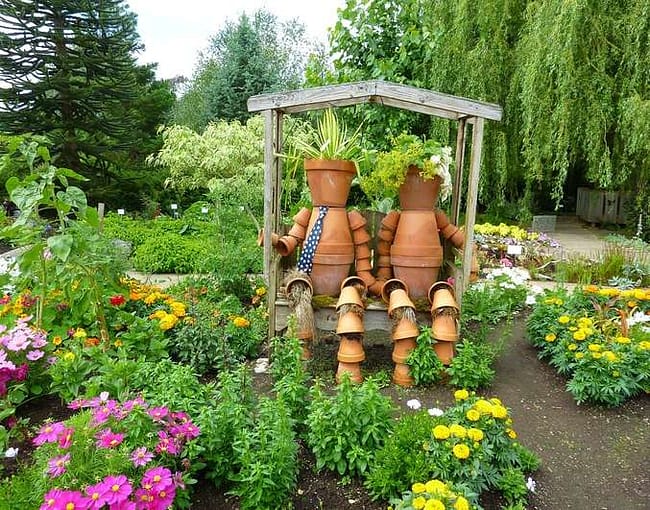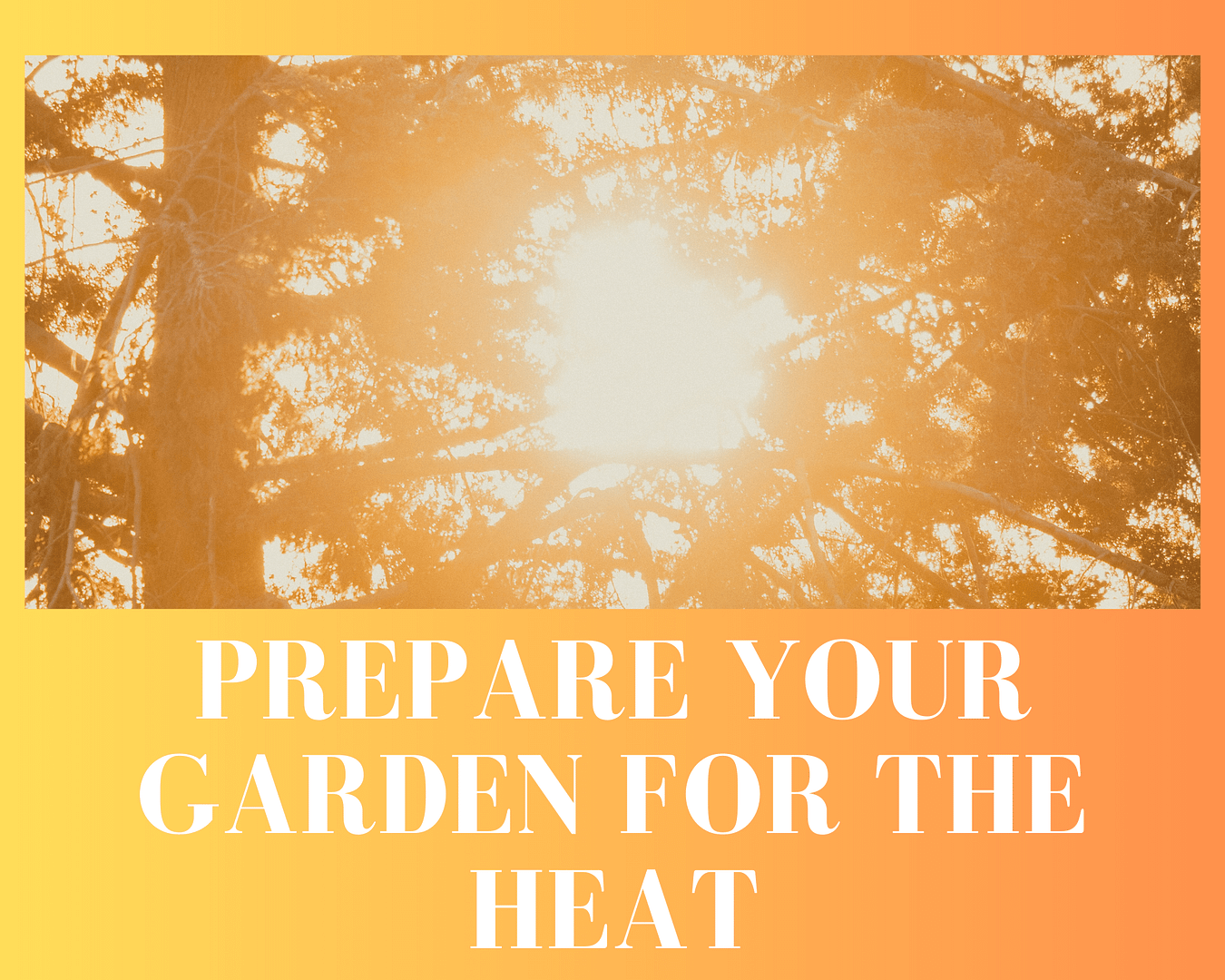This post may contain affiliate links. As an Amazon Associate we earn from qualifying purchases.
Hey there, green thumbers! With the scorching summer already upon us in the Southwest and creeping into other parts of the country, it’s time to protect your garden from heat, both in the air and the soil.
As temperatures soar, both our edible plants and ornamentals can suffer if we don’t take the necessary steps to protect them. But worry not, because, in this guide, we’ll walk you through some handy tips and tricks to ensure your garden thrives even on the hottest days. So grab your sun hat, sunscreen, and let’s get started!
Supplies you’ll need:
- Shade cloth (40% or 50%) or row covers
- Mulch (and lots of it!)
- Drip irrigation system or soaker hoses (or check out the Garden Grid, below. It’s brilliant!)
- Organic compost or well-rotted manure
- Pruning shears
- Light-colored containers for potted plants
- Shade cloth (see the Resources section below)
 Protect your crops from the sun and heat
Protect your crops from the sun and heat
Hopefully, you’ve chosen heat-tolerant varieties. For example, consider ‘Heatmaster’ or ‘Celebrity,’ tomatoes. Heat tolerance is a must-have quality for folks who garden in areas with hot, hot summers. Here are additional tips to help prepare for and protect your edible plants from the heat.
Provide shade to protect your garden from heat
Erect shade cloths or row covers to shield your vegetable beds from intense sunlight. This will help reduce direct exposure and lower the soil temperature. Ensure the covers are securely fastened and offer ample ventilation to prevent overheating.
Keep in mind when shopping for shade cloth that the “… percentage listed on shade cloth refers to the percentage of sunlight and corresponding UV rays blocked. 60% shade blocks 60% of the sunlight,” according to the pros at ShadeClothStore.com. Forty percent is ideal for vegetables, although they go on to say that the white, 50% shade cloth was recommended highly by edible growers in ultra-hot regions such as Arizona.
What Percentage Shade Cloth Do I Need?
| 30% Shade Cloth | Peppers, Eggplant, Squash, Snapdragons, Geraniums |
| 40% Shade Cloth | Tomatoes (depending on heat), Tender perennials |
| 50% Shade Cloth | Tomatoes, Camellias, Azaleas, African violets |
| 60% Shade Cloth | Succulents, Orchids and other sunlight-sensitive plants |
Apply mulch for additional protection
Apply a thick (very thick) layer of organic mulch around your vegetable plants. This acts as a protective barrier, reducing soil moisture evaporation and keeping the roots cool. Use straw, wood chips, or dried leaves for effective mulching. When you think you’ve added enough, add another inch or two.
Water deeply and consistently
As you most likely know, how and when you water your plants during hot weather is critical. Water your edible plants deeply, preferably early in the morning or late in the evening when evaporation rates are lower.
Use drip irrigation or soaker hoses to deliver water directly to the roots and minimize wasted water due to runoff. Keep an eye on soil moisture levels and adjust watering as needed.
This can be accomplished with either a soil moisture meter, or use our preferred method: a rod or bamboo pole, pushed into the soil. If it comes out wet at the desired depth, you’re good to go.
Boost soil health
Enrich your soil with organic compost or well-rotted manure before planting. Healthy soil retains moisture better and provides essential nutrients for vigorous growth. Regularly top-dress with compost to replenish nutrients lost due to heat stress.
Caring for ornamentals when it’s hot
Different ornamentals have varying water needs, so research the specific requirements of your plants. Water deeply but less frequently to encourage deep root growth. Avoid overhead watering, as it can promote disease and evaporate quickly in hot weather.
Mulch, Mulch, Mulch
Just like with edible plants, prepare your garden for the heat by applying a thick layer of mulch around ornamental plants as well. Mulching conserves moisture, regulates soil temperature, and suppresses weed growth. Ensure mulch doesn’t come into direct contact with plant stems to prevent rot.
Prune wisely
Pruning your ornamentals can sometimes help them cope with heat stress. More often than not, however, it may be the worst thing you can do when the weather is scorching. Sure, go ahead and remove dead flowers, but try not to remove foliage unless it’s pest infested. The foliage helps shade the lower branches of shrubs and trees and may even shade the soil.
 Protect your container garden from heat
Protect your container garden from heat
If you have potted plants, opt for light-colored containers that reflect heat instead of absorbing it. Place them in shaded areas and be prepared to water more than once a day, if needed. Monitor soil moisture closely as containers tend to dry out faster.
Provide windbreaks
Erect temporary windbreaks or use existing structures to shield your ornamentals from hot, drying winds. This helps reduce water loss and prevents damage caused by strong gusts.
As the hottest days of the year rapidly approach, taking proactive measures to protect your garden becomes crucial. By implementing these tips, you can provide your edible plants and ornamentals with the best chance of surviving and thriving in scorching temperatures.
Resources
30% Shade cloth (In black or white)
50% Shade cloth (In black or white)






